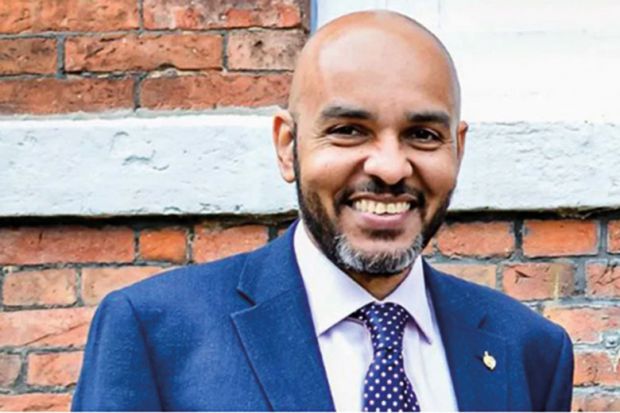Ranking English institutions so the public can see exactly how much progress they are making on inclusion is the only way to ensure the sector goes beyond warm words and takes action, according to a university leader.
David Mba, deputy vice-chancellor (research, knowledge exchange and enterprise) at the University of the Arts London, has compiled a first iteration of an Ethnic Representation Index after becoming frustrated at what he saw as a lack of progress.
The index showcases data from every English university across a range of factors such as the percentage of black and minority ethnic (BAME) students, the number of BAME academics and executives, the attainment gap and whether policies such as an anti-racism strategy are in place.
It finds almost a third of universities declare no BAME representation on their executive boards, including universities with high numbers of BAME students.
THE Campus views: Why higher ed should take an EDI lesson from Kendrick Lamar
A separate analysis looking at only black members of staff, finds only eight universities have black executive board members. The average black representation among governors is 2.6 per cent and among executives is 1.4 per cent, despite the student composition across all universities being 9.5 per cent black on average.
At a staff level, the index finds 10 per cent of university professorial staff and 17 per cent of academic staff are from a BAME background. Only 0.7 per cent of university professorial staff and 2.7 per cent of academic staff are black, while a significant percentage of universities do not have a single black professor.
Professor Mba, who worked with UAL colleagues Yasmine Boudiaf and Chris Lloyd-Bardsley to compile the index, said the “shocking” number of universities in England that have executive boards that are not reflective of their student populations “raises structural issues around [their] processes”.
“We see vice-chancellors making public statements around x or y but then their teams don’t reflect their students,” he said.
It was this lack of action and the absence of any way of monitoring overall progress that prompted Professor Mba to begin the project.
“I’ve been at executive level for six years plus now and I’ve seen all the data, and nothing is changing. Commitments made by the sector don’t usually materialise into anything significant or sustained.”
The first edition of the index lists universities alphabetically, with their progress on each factor rated red, orange or green – red is by far the most common colour – but Professor Mba said future editions would include a ranking after he has received feedback from the sector on how this should be done.
Although he expected “significant pushback”, Professor Mba said he believed rankings provide information to students that helps influence their choices and that in turn may force universities to take the issues more seriously – and prevent those “with good representation to hide the bad”.
“I don’t want to damage the sector, I am mindful of that, but yet you could say we are damaging the lives of many hundreds of thousands of people, so we need to find a balance,” he said.
“You’ve got to point the finger but at the same time you want it to be viewed in a supportive and constructive way.”
UAL has recently set a target of ensuring 30 per cent of staff are from a BAME background. But Mr Lloyd-Bardsley, interim director of planning, said the index showed his own institution still had some way to go.
Register to continue
Why register?
- Registration is free and only takes a moment
- Once registered, you can read 3 articles a month
- Sign up for our newsletter
Subscribe
Or subscribe for unlimited access to:
- Unlimited access to news, views, insights & reviews
- Digital editions
- Digital access to THE’s university and college rankings analysis
Already registered or a current subscriber? Login








